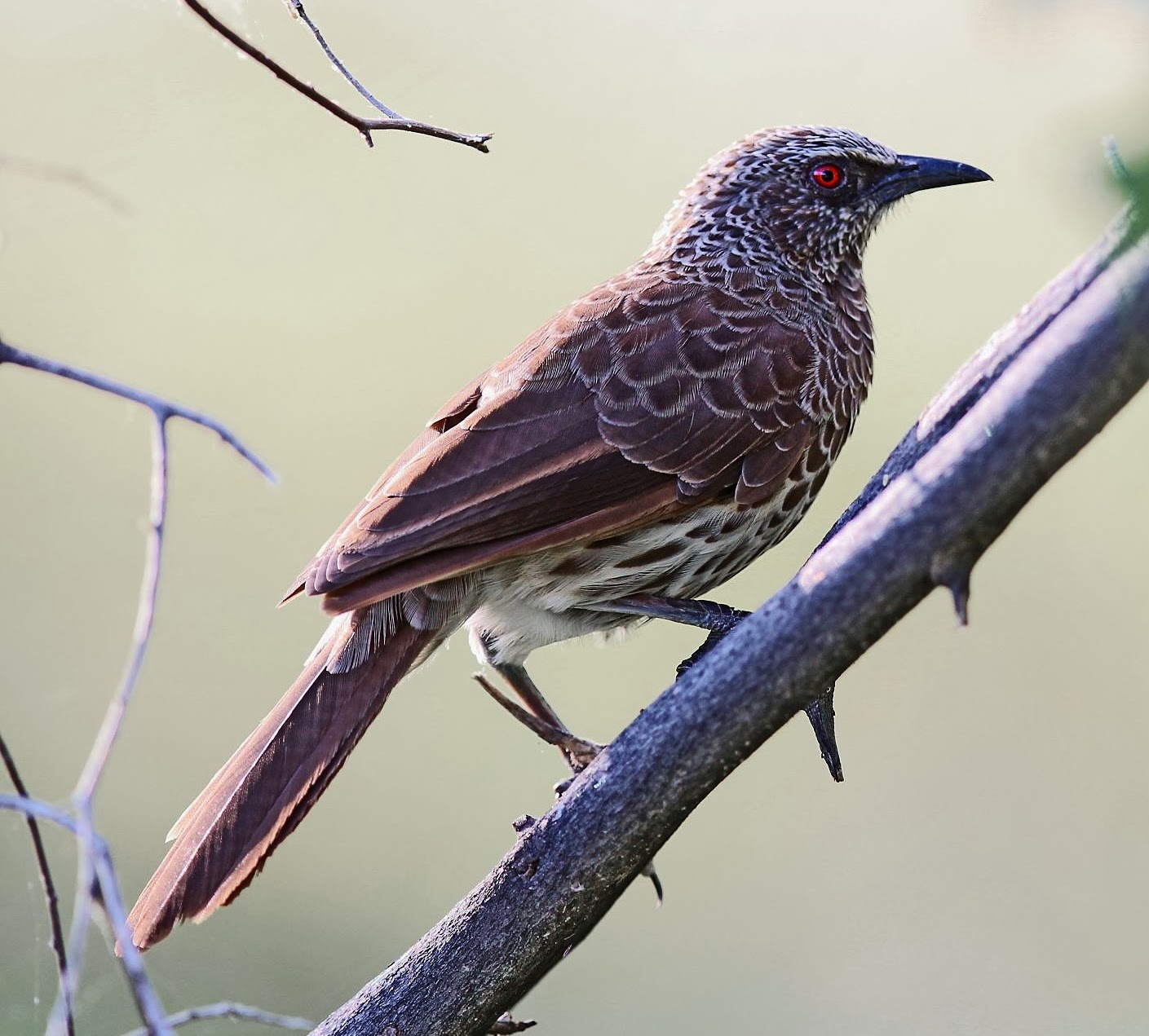 |
| Photo by Lee Ouzman (Lee Ouzman Photographic Library) |
Common name:
Angola babbler (en); zaragateiro-de-rabadilha-branca (pt); cratérope de Hartlaub (fr); turdoide de Hartlaub (es); Hartlaubdrossling (de)
Taxonomy:
Order Passeriformes
Family Timaliidae
Range:
This species is found from south-eastern D.R. Congo, through Zambia and Angola, and into northern Namibia and Botswana.
Size:
These birds are 26 cm long and weigh 80 g.
Habitat:
The Angola babbler is mostly found in moist scrublands and dry savannas, especially along streams and rivers, also using reedbeds and papyrus swamps and marshes, as well as moist tropical forests and rural gardens. They are present from sea level up to an altitude of 2.200 m.
Diet:
They are known to feed on insects, but their diet has not been recorded in detail.
Breeding:
Angola babblers breed in October-April. They are cooperative breeders, with up to 6 helpers assisting the breeding pair in raising the chicks. The nest is a messy bowl made of dry leaves, grass, string and thin roots, lined with finer plant material such as slender twigs. It is typically placed 1-4 m above the ground, in a clump of reeds or on a small tree or scrub located near water, in a swamp or flood plain. There the female lays 2-4 glossy, greyish turquoise or deep greenish blue eggs. There is no information regarding the incubation period, but the chicks are cared for by both parents and helpers, fledging about 18 days after hatching.
Conservation:
IUCN status – LC (Least Concern)
This species has a very large breeding range and is described as common to abundant. The population is suspected to be stable in the absence of evidence for any current declines or substantial threats.







